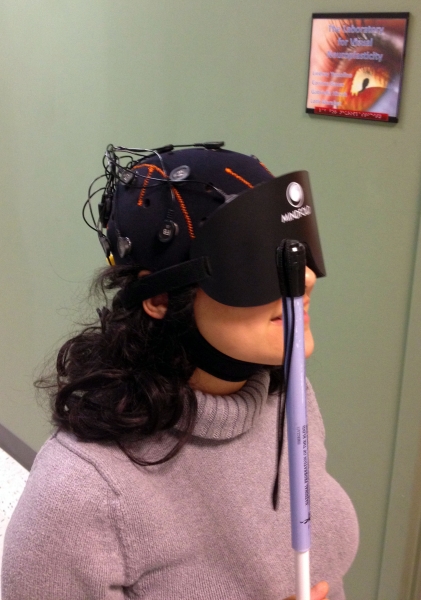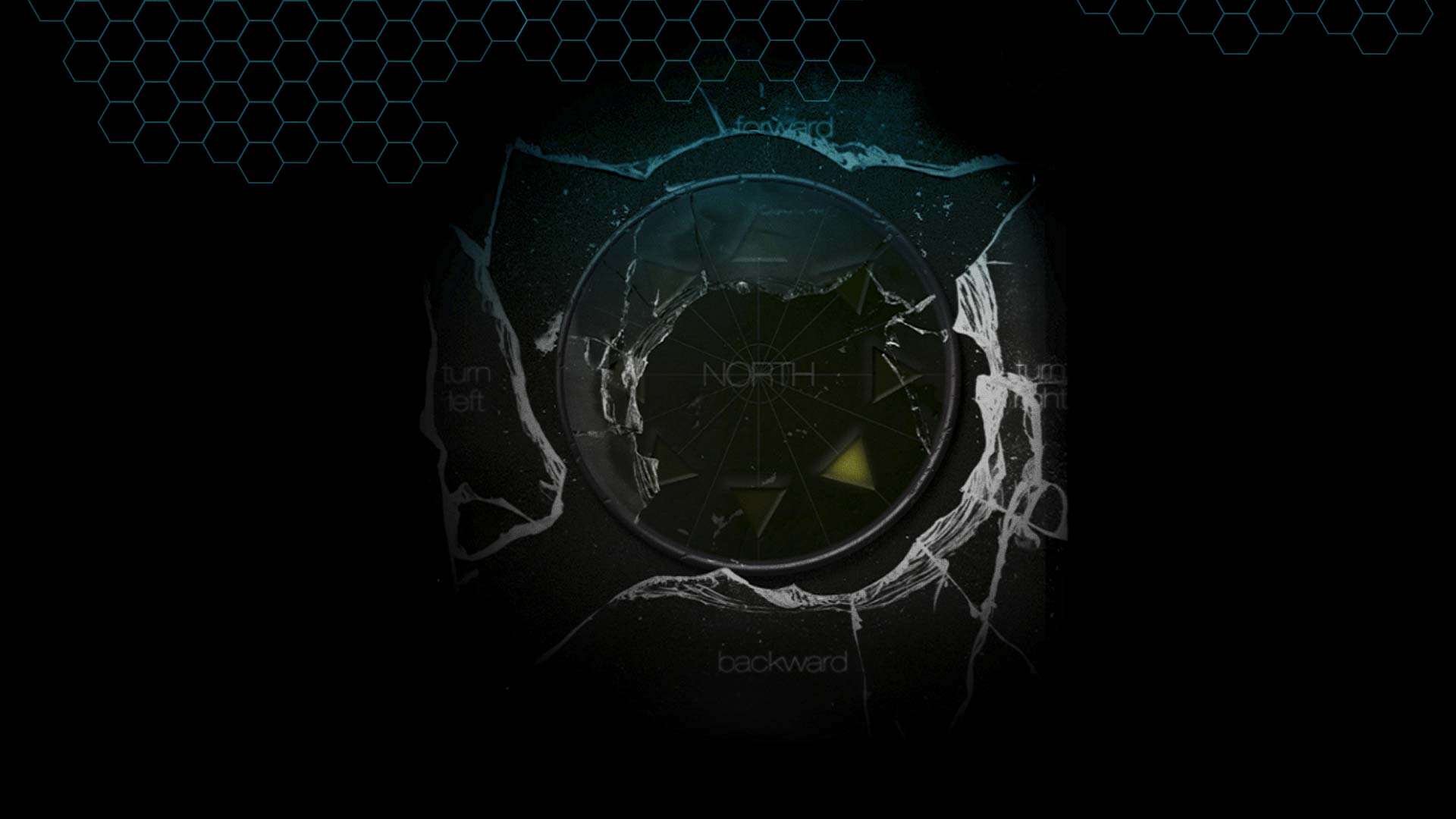The state of gaming today is impressive. People from all walks of life, regardless of age, cultural background, interests, etc. are able to indulge in the same hobby. From kids on a playground to middle-aged mothers to business men on public transportation, I’ve seen so many different people play video games in some way or another. However, there are still groups of people that video games can be inaccessible to. People with disabilities, for instance.
Video games are known as a visual medium, one that over the years has increased its attention to hyper realism, cinematic presentation, artistic stylization, detailed environments, and various other visual stimuli used to enhance a game’s impact. But what of those that can’t take in any of these aspects of gaming? The visually impaired. Are they doomed to a life without our favorite hobby? The short answer is no.
Ever since video games became a popular hobby, people have worked on finding ways to make it more inclusive. A whole subset of games known collectively as “Audio Games” abandon the reliance on visuals in favor of sound design in order to make video gaming accessible to people without sight. People have often said, while studying game history, that some of the best design, and thus the best games, have come from developers having to work around limitations. And what is more restrictive than removing the “video” from video games entirely?
The history of audio games dates back further than most people may realize, reaching all the way back to the mid-70s. Around this time, the popular handheld gaming device “Simon” was released, or even earlier, the game that inspired Simon in the first place: Atari’s arcade machine Touch Me. This game is a simple memory-based game of following patterns of lights, or if you can’t see the lights, sounds that went along with them. Its simple format made it accessible for almost anyone to pick up and play, including those that had to rely on sound. To this day, Simon is still prevalent in the toy market and seen on shelves in stores across the world.
This lent itself to the realization that the game format could be beneficial as well as entertaining. Currently, the process of using game design in rehabilitation for the visually impaired is being studied quite thoroughly at Harvard Medical School, specifically at the Laboratory for Visual Neuroplasticity, headed up by Dr. Lofti Merobet.
Neuroplasticity, putting it simply, is the brain’s natural ability to remap itself as a work-around for damage. Basically, it allows the brain to form new neural connections when damage or illness claims parts of the brain. For someone that loses an entire sense, in this case sight, this is a very important part of adaptation. And Dr. Merobet and his lab are studying the effects of simple game design on aiding in neuroplasticity in terms of vision loss.

One of the first parts of the rehabilitation process for those who have lost sight is learning how to navigate without the visual cues we all use daily. This, along with the development of newly developed motor skills and cognitive mapping, are important in learning to move around while blind. By creating virtual “environments” using basic game design techniques, Dr. Merobet and his team have found a way to help along the neuroplasticity process. By using spatial sound techniques, these simple “games” allow for the development of navigational skills in the visually impaired, proving the benefit of audio games as a way to not only entertain, but also allow for the development of important skills for day-to-day life.
But how do you expand on something like that? Is that all visually impaired gamers get to have? Simple memory-based sound games and navigational virtual environments? Thinking this was the end of the road for audio games would be selling an industry known for creativity and constant innovation short. Instead, over the next four decades, game developers have worked on expanding on the ideas of sound cues as a gaming device.
With the ever-increasing presence of home computers, the tech industry began moving towards making electronic devices functional for the visually impaired. Programs that translated text to a computerized voice, for instance, were major game-changers when it came to accessibility. With these advancements, game developers too saw a new avenue in which to expand their market and bring more people into their community. By taking simple games and translating their processes to spoken text, visually impaired gamers began to find access to a variety of computer games like text-adventure games or simple board games which could be translated to written word. If you’ve ever watched an expert chess player compete by simply speaking out loud their piece movements using coordinates, you can understand how to develop a text-command based game that can be played without the need for visuals.
But after awhile, you can imagine the lack of variety would get tiring. Blind players were stuck with the same text games and simplistic board games for years. And what of the rise of console gaming? Enter the late Kenji Eno, founder of WARP and developer of cult-classic D. You see, before he was a game developer, Eno was a Japanese musician, which meant that not only did he have a grasp on game design, but also on the importance of sound. Using this unique combination of skills, Eno and WARP began work on the game Real Sound for SEGA.
Eno’s focus was to deliver an audio novel with player choice implemented as a gameplay mechanic. Using simple cues to inform the player of needed interaction. Eno spent years speaking directly to blind gamers in hopes of better understanding what they wanted from entertainment. In fact, he even struck a rather interesting deal with SEGA themselves, convincing them to donate a thousand SEGA Saturn systems to various visually impaired gamers along with copies of his game.
In today’s game market, developers are constantly striving to increase accessibility in games. Attempting to broaden the market and bring more people into the hobby. It should come as no surprise that audio games are part of that, and more of them are being made than you think. Games such as XBLIG’s In The Pit, for example, are providing variety in not only platform, but in genre and style as well.
Some even allow both the visually impaired and sighted users to play together, such as last year’s BlindSide, which was released on Desura as well as the Apple App Store. I spoke to Michael Astolfi, one half of the BlindSide development team, to talk more about his game and how they went about creating something without visuals.
“BlindSide was inspired by Aaron’s (Rasmussen – the other developer) personal story of being temporarily blinded in a high school chemistry accident. We wanted to convey the unique experience of suddenly waking up blind and having to navigate the world to sighted gamers, while creating a game fully accessible to blind players, and providing a new gaming challenge to everyone. It was also important to us to make the game as much as possible an equivalent experience for both sighted and blind gamers. This goal influenced a number of design decisions, including the absence of any kind of map, negligible visual feedback, and a simple, self-voicing menu. What better way to raise awareness of an issue, than let people experience a disability for themselves?
Our goal was to create a realistic, fully immersive world that is entirely expressed through audio, and which communicates the frustrations, fears, and accomplishments of rediscovering your world after the abrupt loss of your most important sense. It follows Case and Dawn, a young couple in Boston as they discover the whole world has gone blind and terrifying monsters are outside eating people. They must carefully navigate through their destroyed city and uncover what has happened. We decided to model all the environments on real locations, and many of the 1000+ sounds used in the project are recorded directly from those locations for heightened realism. The game’s gyroscopic control scheme provides the user with an intuitive interface for interacting with our world, pulling them deeper into the experience, and helping to maintain the illusion we needed to properly execute our story. We had to make custom algorithms to more usefully simulate an audio-only world, including low-pass filtering and attenuating sounds behind the player to give a more surround-sound sense of direction even on stereo headphones, dynamic reverb, wall dampening, and the ability to slide along surfaces and hear their geometry. In the blind community, this is called “trailing,” when you run your hand along a wall looking for a door or while navigating around the room.”
–Michael Astolfi, BlindSide Developer
[youtube=http://youtu.be/3jxskQgWoaE]
And there are more on the horizon as well. Currently, Incus Games is working on Three Monkeys, which has crafted a new world with it’s own mythology known as Byzantia. The story of Three Monkeys is of a world cast into darkness by a witch. You play as a born-blind character named Tobar, who’s natural blindness gives him an interesting strength in dealing with the world. Allowing for characters in a game to be blind opens whole avenues of character development and allows a subset of the population to be represented in a way that registers to them as well as allows sighted players a “look” into a different skill set.
Yoska monologue from Three Monkeys.
As technology continues to expand upon what can be achieved in video games, the accessibility and range with which games can reach audiences will grow as well. By utilizing the various tools for game design, it’s becoming possible to move past things that have otherwise kept people from enjoying games.

